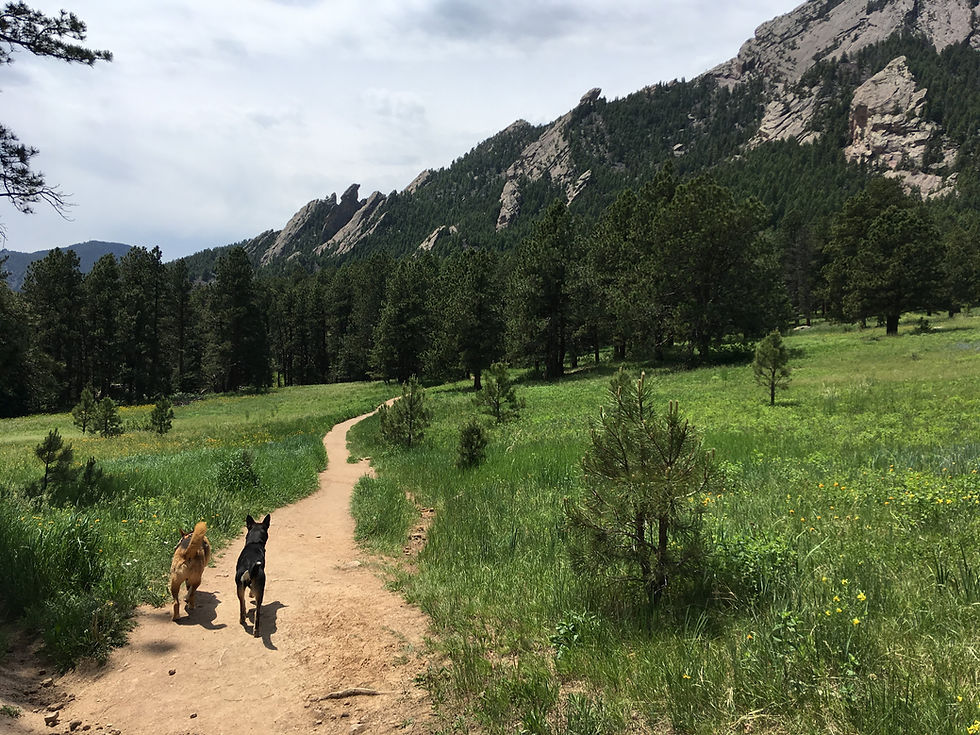How to Train a Reactive Dog: Steps to Building Confidence
- Christine Booth

- Jan 20
- 3 min read
Training a reactive dog can feel challenging, but it’s important to understand that reactivity often stems from confusion. Your role as pack leader isn’t to force your dog into submission or over-comfort them—it’s to gently guide them out of their confusion and into a place of calm understanding.
Reactivity can manifest in two primary ways: aggressive or timid behavior. Both require a thoughtful and trust-based approach to help your dog adjust to the world around them.

1. Start with Understanding and Patience
When your dog reacts to a stimulus—be it another dog, a loud noise, or a stranger—they’re often expressing confusion or fear. As their leader, your job is to help them understand the situation is safe and manageable. This doesn’t happen overnight, but with consistent and calm guidance, you can help them build confidence and understanding.
2. Slow Introductions are Key
To help your dog adjust to a reactive stimulus, start by keeping your distance. Position yourself far enough away that your dog notices the stimulus but doesn’t overreact. Sit there calmly, doing nothing, and let your demeanor communicate that everything is fine. This aligns with our Lead by Being principle: when you exude calm confidence, your dog will start to mirror it.
Gradually decrease the distance over multiple sessions, ensuring your dog has several positive exposures to the stimulus. Each time they remain calm, reward them with treats, gentle pets, or even playtime as a positive reinforcement. Depending on the situation, an aggressive reaction may require a loving but firm correction to communicate with your dog that their response is an unnecessary way to be around this stimuli.
3. Avoid Over-Soothing Timid Reactions
If your dog is timidly reactive, resist the urge to over-soothe them with a high-pitched or “babying” tone. While your intentions are good, this can actually signal to your dog that something is wrong, reinforcing their fear. Instead, remain neutral and confident, showing through your body language and tone that there’s nothing to fear.
4. Reactivity to Other Dogs: Safety First
If your dog reacts strongly to other dogs, prioritize safety above all else. Always err on the side of caution to prevent injuries or additional trauma for either dog. Start with very controlled exposures, such as observing another dog from a safe distance across a park or street.
Should an incident occur, don’t panic or blame yourself. Instead, reflect on what might have been too big of a step and adjust your approach. Progress might take time, but every small step forward is a win.
5. Positive Reinforcement and Consistency
Each time your dog calmly interacts with their reactive stimulus, reward them! Treats, pets, and even short play sessions can reinforce the behavior you want to see. Over time, your dog will associate the stimulus with positive experiences instead of fear or confusion.
Training with a Reactive Dog Takes Time
Training a reactive dog is about more than “fixing” their behavior—it’s about helping them feel safe, confident, and connected to you as their leader. Remember, mistakes will happen, and that’s okay. Every misstep is an opportunity to reassess and refine your approach.
Ready to Build Your Dog’s Confidence?
Our trust-based training programs can guide you through every step of your dog’s journey. Whether you’re just starting out or looking for advanced guidance, we’re here to help. Check out our Pack Transformation Program or explore our book, The Hidden Habits of Highly Successful Pack Leaders, to discover how to lead your dog with trust, calm, and confidence.




Comments